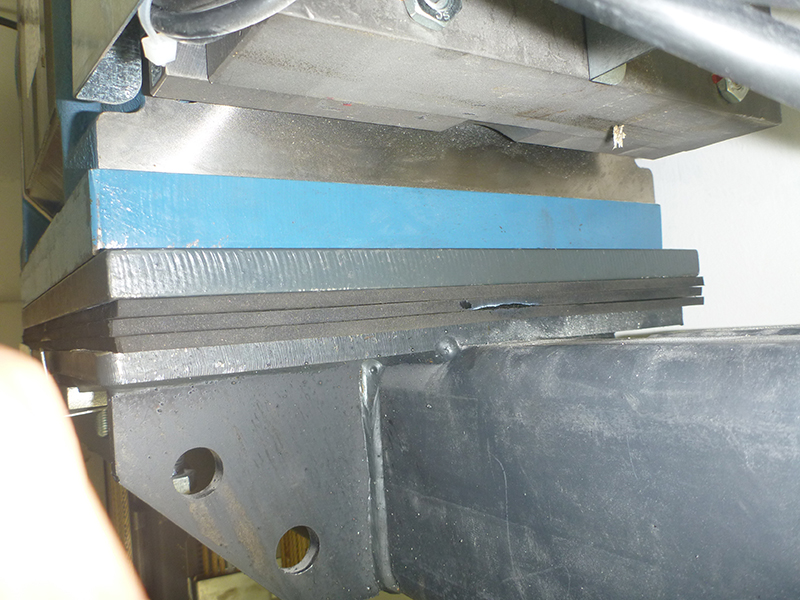Photo: © Kone

News | April 2024
Kone acquires Paca Ascenseurs
Assa Abloy has sold its lift maintenance business Paca ascenseur (Paca) in France to Kone. With this acquisition, Kone intends to strengthen its local presence in the region.

Drive frame for lift without machine room. (Photo: © Ulrich Nees)
January 2020
After ten years of revision, VDI 2566 Page 1 and 2566 Page 2 have been incorporated in DIN 8989 (noise insulation in building lifts).
The draft of DIN 8989 was published in October 2018; appeals can be submitted up to January 2019. A revision of the VDI guidelines was necessary to specify the requirements for lifts and the building or lift shaft.
Table 3 (Noise emission values to be observed by lifts to achieve noise insulation targets) and Table 4 (Surface-related masses of walls and ceilings to be observed to achieve noise insulation targets) of DIN 8989 receive attention beyond the borders of Germany.
The correlation between the surface-related masses to achieve the noise-insulation targets for airborne and structure-borne noise – depending on the location of the rooms to be protected – is described. The requirements for lifts in relation to airborne and structure-borne emissions in order to achieve the noise protection target according to DIN 4109 and / or VDI 4100 are stated correspondingly.
If the noise level in rooms to be protected is to be reduced from 30 dB(A) to 27 dB(A), the shaft must be given a higher surface-related mass on site and the lift must reduce the air-/structure-borne noise emissions. For a reduction of the noise level by 3dB(A) in a room to be protected, the surface-related mass has to be increased from 580 kg/m² to 670 kg/m² and the lift must reduce the airborne and structure-borne noise level according to Table 4.
The burden in achieving noise insulation targets is divided equally between the lift and shaft design (surface-related mass). Coordination between the owner and lift company / installation company is necessary to achieve and establish the noise protection targets.
The requirements on the lift in relation to airborne and structure-borne noise, the location of the rooms to be protected and the surface-related mass of the lift shaft must be described in calls for tenders / specifications. Information that the requirements from DIN 4109 or VDI 4100 have to be met is insufficient.
Arrangements must be made if the desired noise insulation targets in rooms to be protected cannot be achieved with particular lift types. For example, if noise protection level III is required, this may mean that
a) the room to be protected is not located next to the lift shaft,
b) to achieve the noise protection targets, a lift without machine-room is not possible or
c) the surface-related mass of the wall has to be changed correspondingly.
If the lift meets the requirements from DIN 8989, but not the insulation targets in the room to be protected, the following points must be reviewed:
- Does the wall thickness correspond to the planning or on-site requirements?
- Does the surface-related mass correspond to the requirements?
- What is the design of the adjacent structures?
- What is the functionality of the expansion joints between lift shaft and rooms, staircases, etc. to be protected?
- Does the location of the room to be protected comply with the planning?
- What airborne and structure-borne emissions are caused by the lift?
 Review of the qualities pledged on-site (surface-related mass, degree of noise insulation, etc.) is elaborate. Measurement of the frequencies actually emitted and noise level of the lift to the shaft wall is recommended as a low-cost alternative.
Review of the qualities pledged on-site (surface-related mass, degree of noise insulation, etc.) is elaborate. Measurement of the frequencies actually emitted and noise level of the lift to the shaft wall is recommended as a low-cost alternative.
In view of VDI 2566 Page 1 and Page 2, DIN 8989 is a necessary and logical step to create a standard that can be enforced for lift construction from the existing standards and guidelines (DIN 4109-1, VDI 4100, § 633 German Civil Code).
Specifications are available for enhanced noise insulation or if noise protection level II and noise protection level III are required. The advantage of DIN 8989 is that the lift company and building owner have to share the burdens for noise insulation in rooms requiring protection.
Both work partners must cooperate to achieve the desired targets. If the employer / operator of a body issuing a tender (technical planner, engineering firm, etc.) commissions the work, the body issuing the tender must provide all the information required to the lift company / installation company in the call for tenders / specifications.
Ulrich Nees
You can read the detailed text at www.lift-journal.de/schallschutz
www.aufzugsystemeberatung.de
Write a comment